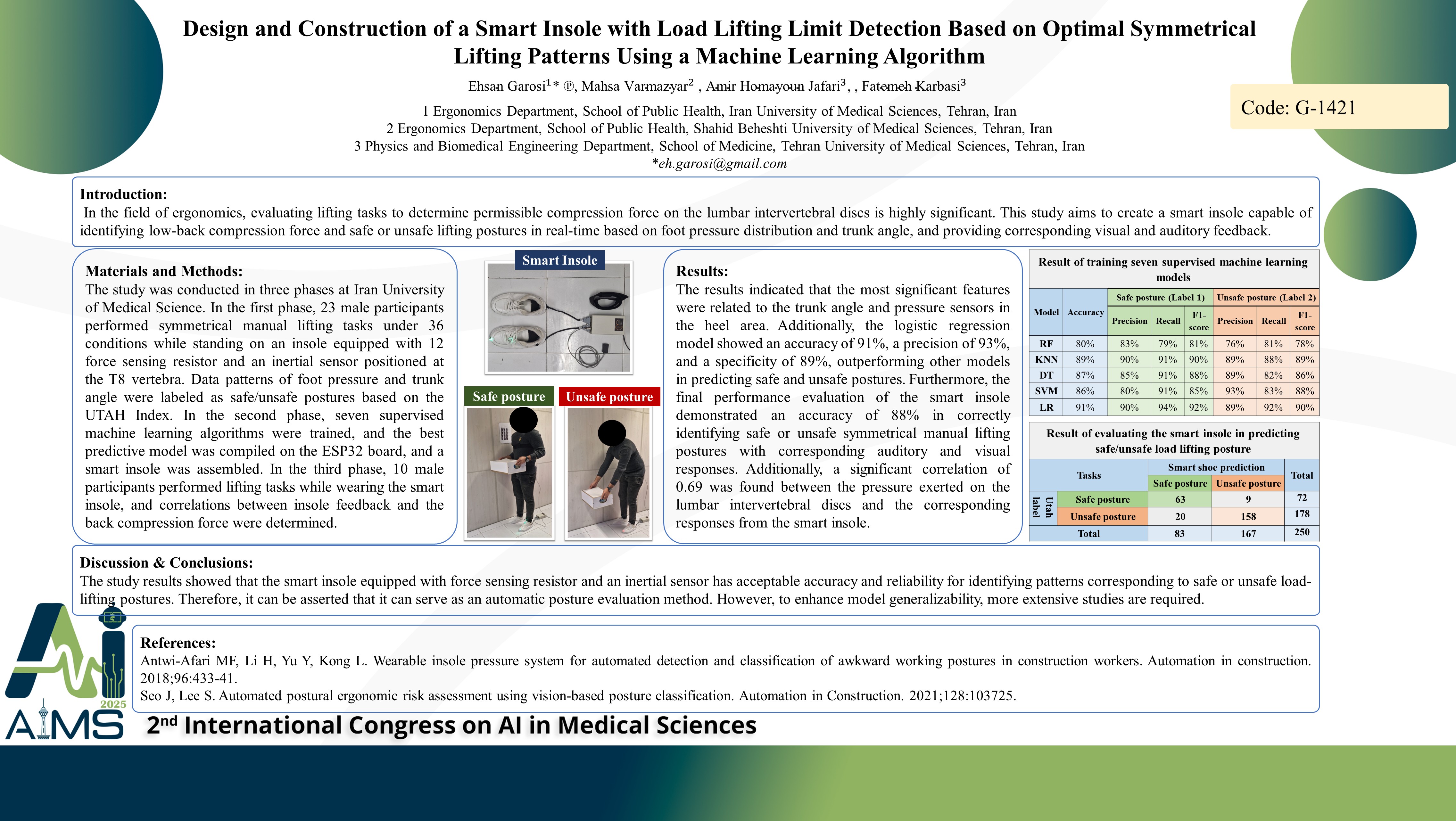Design and Construction of a Smart Insole with Load Lifting Limit Detection Based on Optimal Symmetrical Lifting Patterns Using a Machine Learning Algorithm
Code: G-1421
Authors: Ehsan Garosi * ℗, Mahsa Varmazyar, Amir Homayoun Jafari, Fatemeh Karbasi
Schedule: Not Scheduled!
Tag: Robotics in Surgery and Care
Download: Download Poster
Abstract:
Abstract
Introduction: In the field of ergonomics, evaluating lifting tasks to determine permissible compression force on the lumbar intervertebral discs is highly significant. This study aims to create a smart insole capable of identifying low-back compression force and safe or unsafe lifting postures in real-time based on foot pressure distribution and trunk angle, and providing corresponding visual and auditory feedback. Method: The study was conducted in three phases at Iran University of Medical Science. In the first phase, 23 male participants performed symmetrical manual lifting tasks under 36 conditions while standing on an insole equipped with 12 force sensing resistor and an inertial sensor positioned at the T8 vertebra. Data patterns of foot pressure and trunk angle were labeled as safe/unsafe postures based on the UTAH Index. In the second phase, seven supervised machine learning algorithms were trained, and the best predictive model was compiled on the ESP32 board, and a smart insole was assembled. In the third phase, 10 male participants performed lifting tasks while wearing the smart insole, and correlations between insole feedback and the back compression force were determined. Findings: The results indicated that the most significant features were related to the trunk angle and pressure sensors in the heel area. Additionally, the logistic regression model showed an accuracy of 91%, a precision of 93%, and a specificity of 89%, outperforming other models in predicting safe and unsafe postures. Furthermore, the final performance evaluation of the smart insole demonstrated an accuracy of 88% in correctly identifying safe or unsafe symmetrical manual lifting postures with corresponding auditory and visual responses. Additionally, a significant correlation of 0.69 was found between the pressure exerted on the lumbar intervertebral discs and the corresponding responses from the smart insole. Conclusion: The study results showed that the smart insole equipped with force sensing resistor and an inertial sensor has acceptable accuracy and reliability for identifying patterns corresponding to safe or unsafe load-lifting postures. Therefore, it can be asserted that it can serve as an automatic posture evaluation method. However, to enhance model generalizability, more extensive studies are required.
Keywords
Musculoskeletal Disorders, Smart Insole, Posture Assessment
